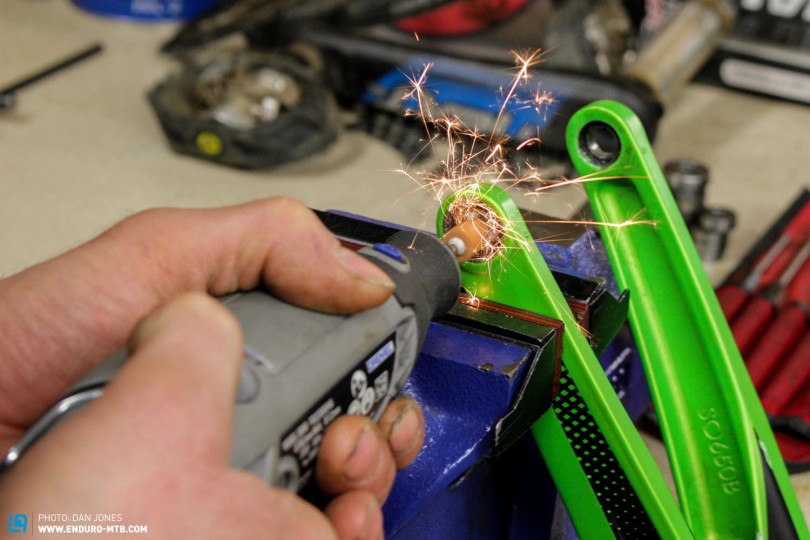Spring is almost upon us and after what seems like a never ending winter, months of jet washing and dirt ingress has really started to take its toll on our precious steeds. A lot of riders are finally deciding to freshen up their rigs and we are hearing a recurring theme ‘knackered bearings’.
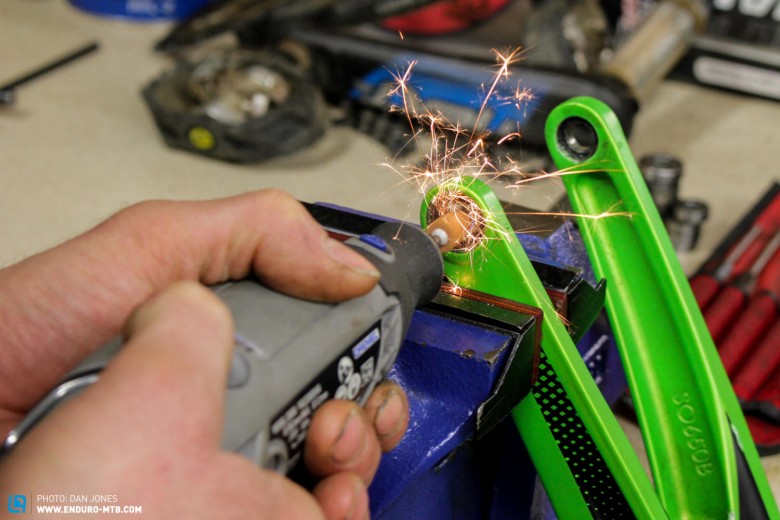
We have all done it some point, a bearing starts to develop some play and you think ‘it’s not that bad’ or ’I’ll change it next week’ but how much damage could we be doing to our frames and our wallets, by penny pinching and over running service intervals? We popped into The Trailhead in Shrewsbury to talk over some of the problems they’ve been having with bearings with their mechanic Rich Guppy. Guppy has worked in the cycle industry as a mechanic on and off for nearly 20 years, he’s one of the industry’s best and is also very capable on a bike, even competing in the 1995 DH world champs. Guppy has a lot of experience, really knows his stuff and well respected, He’s no hamfisted Ogre!
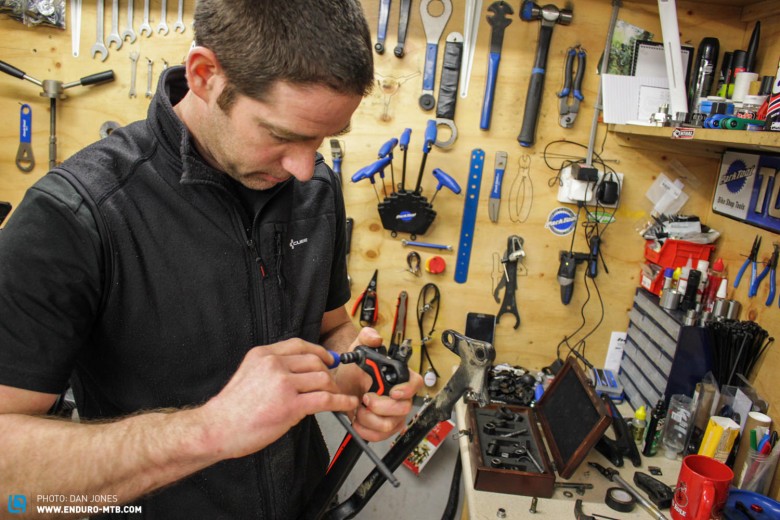
How much damage can pressure washing do to bearings?
You get strong jet washes, and weaker home use ones. Neither are good news for your bearings. The bottom line is if you choose to jet wash (which we all have to sometimes), then you can bring your service intervals forward considerably. A good high pressure garden hose is best, and even then use it with care. We find a good brush set and a garden hose will clean any bike.
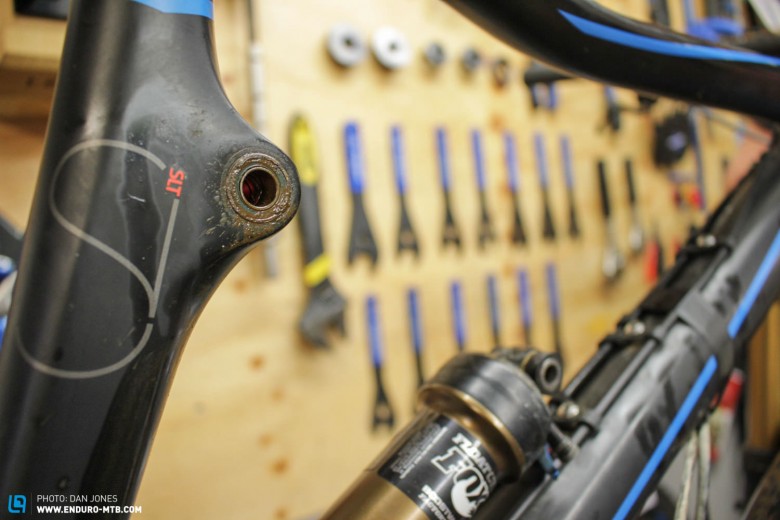
If you get a seized/tight bottom bracket bearing, how much more effort is needed out on the trail?
A very hard one to quantify, but just take a look at the BB bearing pictured. Often they become loose and develop a creak or a wobble. We have seen some seize solid, causing the BB shell to get damaged.

What damage can worn or seized bearings cause in a frame?
This can be catastrophic, countless times we have had to dremel out a stuck outer bearing race, and this can take up to an hour per bearing. Then we have to justify the huge labour bill. I really wish people would get their bikes checked/serviced more regularly. This isn’t because we want more service money, but it will actually save the customer a vast amount.
How much harder does an overdue bearing change make your job?
It can double the time. So a bike that needs a bearing change but its not totally past it will take 1.5–2 h. A bike that’s been ridden past its service interval can take up to four hours. Bike shops charge between £ 25–50 per hour so you can really see it makes sense to get things checked out. Surely you want your expensive pride and joy running at its best? Maybe hold off on the anodised seat clamp and put that money into servicing. Easiest thing to do is get your bike in a stand, drop the back wheel out, then the rear shock and cycle the back end and feel for any grinding. Sometimes you have to use physical strength to get the back end to even move. If this is the case, then just what is this doing to your frames welds and pivots?
We know some manufactures have warrantied bearing issues, technically it’s incorrect maintenance, is this a grey area?
A good few bike companies offer lifetime frame bearings, the customer just has to pay for the labour to have a shop fit them. The grey area comes when we see a cracked back end, but the bearings are seized solid, the movement is dispersed from the bearing into the frame material causing failures. Then is this down to lack of maintenance from the owner? Like you said a grey area. My belief is prevention is better than cure.
How often would you recommend changing your linkage/swingarm bearings?
This is a tricky one, a few questions need to be asked first… How many times a week do you ride? Are they winter miles or dusty miles? Are you a jet washer or a lover? Normally every 12–18 months for the casual once a week rider. But I’ve seen bearings go in 6 months and others last 3 years. Drop that shock out and keep an eye out for yourself.
How much damage can home mechanics potentially cause pressing bearings, headsets and bottom brackets into Carbon frames using a vice and bits of wood?
The first problem here is warranty. Some bike manufactures would void a bikes warranty if a bearing was put in off center, or incorrectly. I do think a BB fit can be successfully fitted at home, but the correct tools are essential. It may go in fine with your threaded bar/washer system, but it just takes one misaligned cup and you’re in a world of issues.
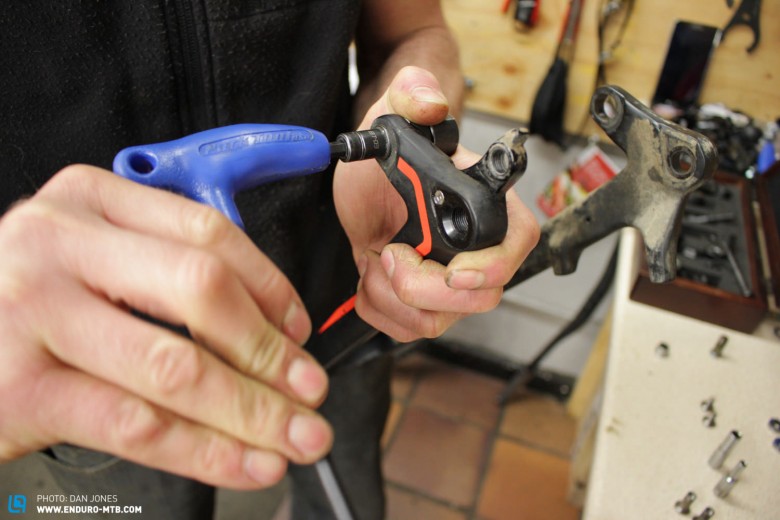
Finally a quick question for Sandy Plenty, The Trailhead owner, 3–4 hours to change bearings, we imagine the cost would be a shock to your customers?
It’s a tricky one for sure. I’ve spent many a phone conversation explaining how a large labour bill could have been prevented with more frequent service intervals. We are lucky that we have good trust with our customers, so they understand that things can take longer. My advice is to take your bike to your local bike shop that you trust. When the job is particularly time consuming we keep the old bearings in a bag to show the customer. One thing we don’t do is make our customers feel bad or stupid for letting things get this way, at least their bike is getting used. Just don’t let it turn into a broken frame.
So there you have it, over running service intervals on bearings can do some serious damage to your bike and your wallet. If you’re going to do it yourself make sure you have the right tools, if in doubt take it to your local bike shop and let the professionals at it. Worn bearings will damage your frame but also hinder your capability to beat your mates out on the trail.
Words: Andrew Cooper Photos: Dan Jones
Did you enjoy this article? If so, we would be stoked if you decide to support us with a monthly contribution. By becoming a supporter of ENDURO, you will help secure a sustainable future for high-quality mountain bike journalism. Click here to learn more.



